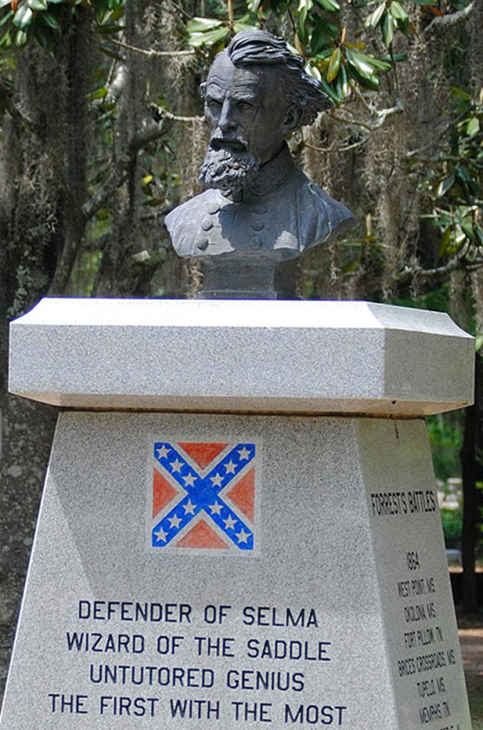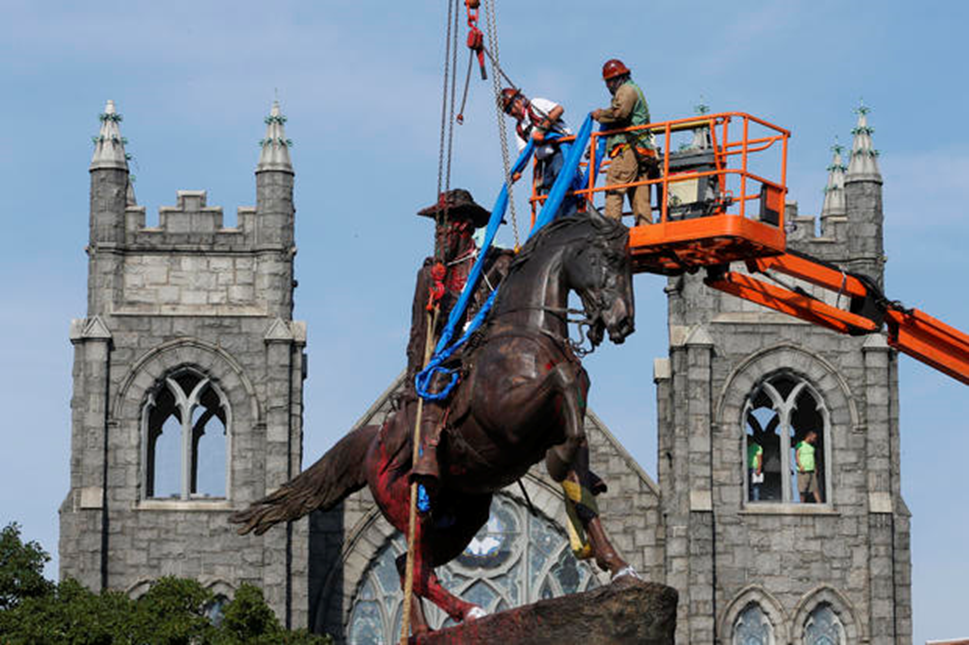Understanding the causes and consequences of the Civil War is essential to understanding contemporary political events, as this war marked a bitter division in both government and broader society. The southern states, which favored secession from the Union and created the Confederation, hoped to preserve the slavery system. This system was the backbone of the states’ economies selling cane sugar and plantation-grown tobacco using free slave labor. Many southern politicians were members of the Ku Klux Klan, an organization that persecuted blacks during the Reformation and beyond.

This is a monument dedicated to Nathan Bedford Forrest, Selma, Alabama, was erected in 2015. Forrest was the Ku Klux Klan leader and a Confederate general.
The Confederation’s defeat in the Civil War was a disappointment for many high-ranking politicians and elites in the Southern states. Therefore, even though the goals of the Confederation were not achieved, representatives of the elites united in associations that defended the memory of the “glorious past.” From 1889 to 1912, a considerable number of Confederate monuments were erected, which differed in shape. Still, all had a common goal – preserving the ideas of the Confederation and preserving the status quo, despite the defeat in the war. Later, in the middle of the 20th century, when the United States finally stopped the policy of segregation, the Confederation’s supporters continued their struggle, spreading false information that the Confederates were fighting for the rights of black slaves.
Finally, in the 21st century, the world has seen a resurgence of attention toward the Confederation. From 2000 to 2017, a massive number of Confederate monuments were erected. These actions provoked protests throughout the country since these monuments promoted white supremacy. Some monuments in the Northern states, such as the statue of Confederate General Lee in New Orleans, were removed from their pedestals. Many stones were doused with paint by residents who disagreed with the city authorities’ decision to install these memorials. In response, Alabama, Georgia, Mississippi, North Carolina, South Carolina, Tennessee, and Virginia have passed laws protecting Confederate monuments as heritage.

The Confederate Monument to Robert E. Lee was removed from its pedestal on May 17, 2017.

Municipal workers attach belts to a statue of Confederate General J.E.B. Stewart on Monument Avenue in Richmond, Virginia, on June 7, 2020.
In light of the above, the United States needs to rethink its tradition of remembering the war. Hundreds of monuments to the Confederates were erected after the defeat of the Confederacy in the Civil War. Given that the Confederation fought to preserve slavery and white supremacy, these monuments cannot be attributed to historical heritage, as they advocate racial hatred. Therefore, the federal government should influence the listed states’ governments and contribute to eliminating memorials honoring the Confederates, who were supporters of inequality. It is also necessary to continue removing monuments in the rest of the states to end the propaganda of values that run counter to the values protected by the country’s Constitution.